Adrianos Golemis recounts his travels to Concordia and the many stopovers on the way.
In the land of ice, the sun shined mockingly without end. While in Mario Zucchelli Station, we experienced the midnight sunlight that the ancient explorer Pytheas described as a phenomenon of the extreme North. During the nights, we struggled to sleep, but the accumulated jet lag of so many days tampered with our inner clocks, amplified by the complete absence of darkness.
For the first time since high school, I had decided to use a watch in order to keep track of time – and I cannot remember how many times I set the time to match the different time zones I passed through these last days.
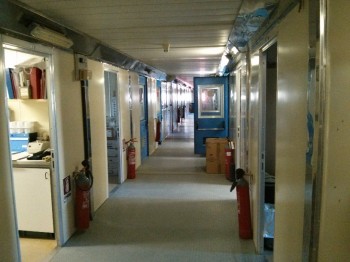
Mario Zucheli station interior. Credit: ESA/IPEV/PNRA-A. Golemis
After all these stays, I had ended up in Terra Nova Bay, named by Captain Scott himself in honour of his ship, the Terra Nova. Further south on the coastline lies the mystical volcano, Mt. Erebus, also named by Scott, after his second ship. A stone formed in the magma below, the Erebus Crystal, was found here and still troubles scientists with its bizarre composition. I would very much like to visit this area, so I keep my hopes up for the return journey. If the planes from Concordia make a stop at McMurdo station, the busiest base in Antarctica, I might have a chance – but travelling through McMurdo is rare and occurs only in case of need. The American McMurdo base hosts up to 1200 people, dwarfing Concordia whose maximum is 70. It is located near the foot of Mt. Erebus, and takes its name from a British Naval Officer. It is so large that they also call it “McCity” and perhaps it’s the only place where you can find an ATM in Antarctica. McMurdo is an all-year round station, like Concordia. By contrast, Mario Zucchelli (MZS) is occupied only during the summer months. It is named after the previous Italian head of the PNRA (the National Italian Antarctic Program). Similarly, the French Polar Institute is named Paul-Emile Victor after another recent Antarctic figure. The French Station Dumont D’Urville, a “neighbour” of Concordia, lies on the coast, but west in relation to Mario Zuchelli and McMurdo. Monsieur D’Urville was an 18th century Antarctic pioneer explorer, also partially responsible for the historic Greek statue of Venus de Milo ending up in the Louvre. On top of these, he made the first claim of a part of Antarctica for France, calling it Terre Adelie, after his wife.
Captain Scott could named a third area after his his third ship: Mount Terror.
Returning to Concordia’s surroundings, aside from the French and Italian stations, there is an Australian base close by as well, Casey, named after the diplomat Baron Richard Casey. And let us not forget the Russian Vostok Station, also named after an Antarctic Exploration ship! There a huge subterranean lake was recently discovered. Vostok is the closest base to Concordia at only 600 km away. Obviously when we speak of “neighbouring bases” we do not really worry about being disturbed by the neighbours or being overly noisy in the morning. Between Concordia and Mario Zuchelli there is a tiny unmanned spot called Midpoint, where airplanes can briefly stop for refuelling, if needed. Between Casey and Concordia there is a similar position, called Aurora Basin.
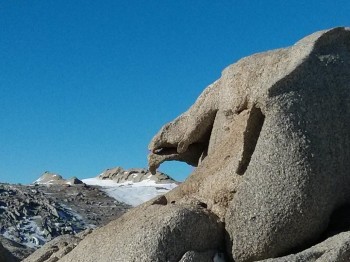
Nature’s art. Credit: ESA/IPEV/PNRA-A. Golemis
For the time being we were waiting near the Ross Sea, named after James Clark Ross, the British Arctic and Antarctic explorer. As we hiked around Mario Zucchelli Station, at places we were only walking on two meters of frozen water. After two days of resting and trying to adjust to sleeping with constant daylight, we decided to explore the nearby surroundings of. Climbing the cliffs around the base, I found a small volcanic rock under the ice and came across what seemed to be a carven figure of an eagle, sculpted by the greatest of all artists: mother nature.
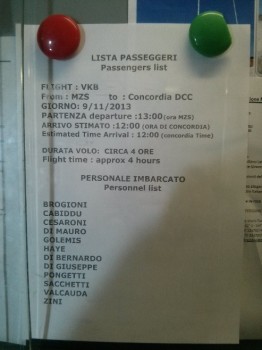
On the list. Credits: ESA/IPEV/PNRA-A. Golemis
The weather was very “summerlike” at Mario Zuchelli and we could walk about without heavy Antarctic gear. As we reentered the base, we found our names on the passenger list of the next plane: our time to leave had come.
We dressed as warm as we could and protected our hands with gloves and our faces with masks. Although this equipment was too much for Terra Nova Bay, it was necessary for our destination. Soon we embarked on the tiny plane with our luggage stored next to us on the side.
Our Bassler was ready for take-off and soon we would finally reach Dome Circe after one week in transit. I was amazed to see that the wheels of our plane are fixed with ice skates.
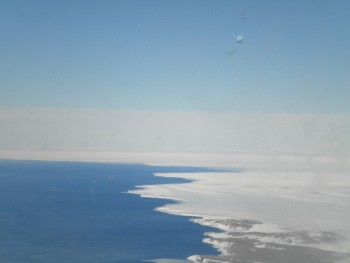
Antarctic coastline. Credits: ESA/IPEV/PNRA-A. Golemis
As we flew above Antarctica, I peered out of Olivier’s window to observe the Antarctic coastline for the first time. The image brought back another memory, the last view of my home country from a different plane window, just before I set out for the end of the world. A contrast of feelings.
We flew for four hours and passed through four different time zones. The meridians of the Earth converge at the poles, and we had to to set our watches four hours ahead again.
Finally the pilot’s voice was heard from the speakers: “Prepare for landing”, in a New Zealand accent. Concordia could be seen as a tiny spot in the vastness of white, almost like a tin can described in David Bowie’s Space Oddity. In a way, I expected Major Tom to come out and greet us!
[youtube D67kmFzSh_o]
No coastline, mountain or other distinguishable feature was visible around Concordia. This place, our new home for one year, was immersed in a shroud of infinite white. Out of the great seas and massive landmasses, we had finally reached our Realm of Ice. ҉

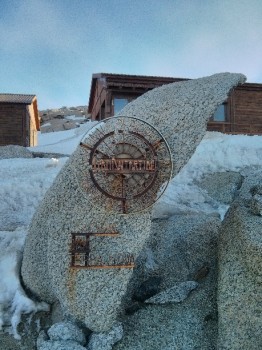
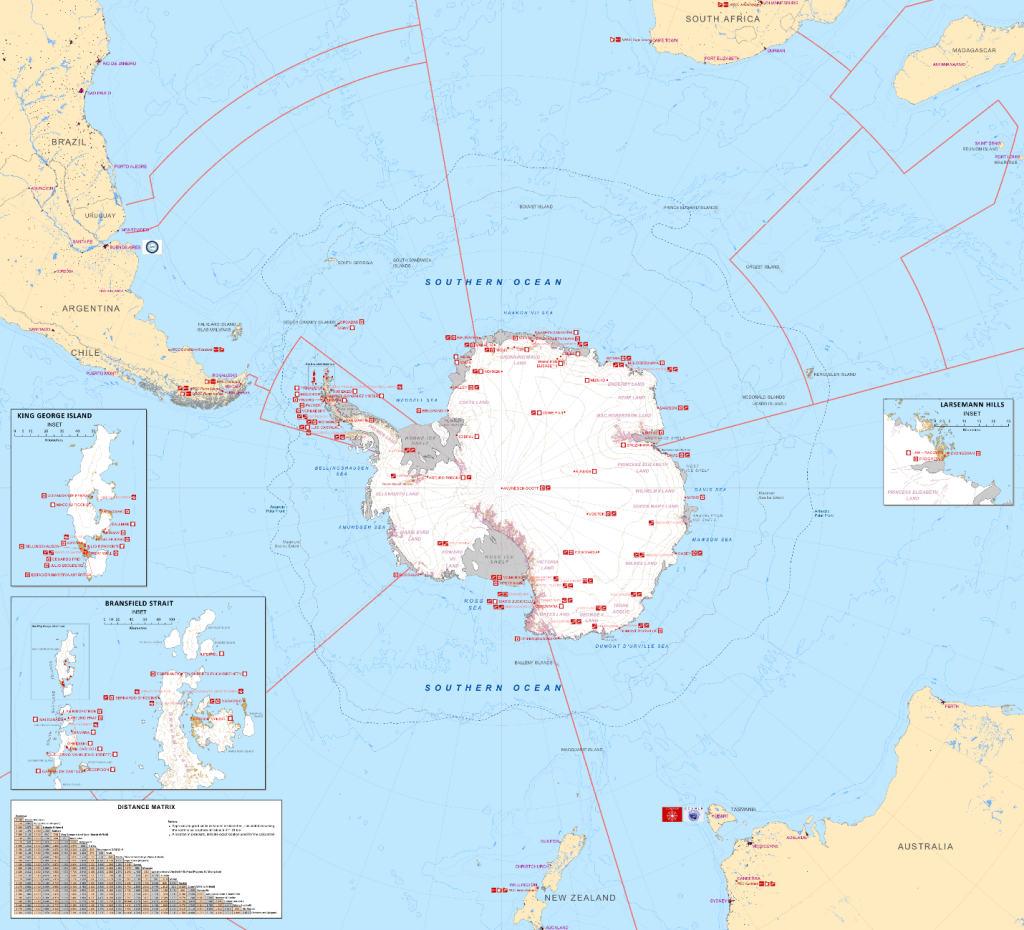




Discussion: no comments